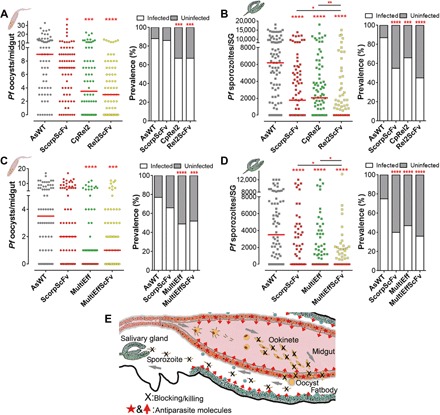Fig. 3. The hybrid lines ScorpScFv with CpRel2 or with MultiEff targeting the malaria parasite at multiple infection stages result in near-complete refractoriness.

(A and B) P. falciparum (NF54) oocyst and sporozoite infection intensities and prevalence of two transgenic lines (ScorpScFv and CpRel2) and the hybrid line of the two transgene cassettes (Rel2ScFv) at 8 dpi in the gut (A) or 14 dpi in the salivary glands (SG) (B) with additional blood meals at days 5 and 9 PIBM. (C and D) P. falciparum (NF54) oocyst and sporozoite infection intensities of two transgenic lines (ScorpScFv and MultiEff) and the MultiEffScFv hybrid transgenic mosquitoes at 8 dpi in the gut (C) or 14 dpi in the salivary glands (SG) (D), with additional blood meals on days 5 and 9 PIBM. Assays were performed with at least four biological replicates, and the horizontal lines (red) indicate the median values. Mann-Whitney test was used to calculate P values and determine the significance of parasite numbers. A χ2 test was used to compare infection prevalence values. *P < 0.05, **P < 0.01, ***P < 0.001, ****P < 0.0001. Detailed statistical analysis is presented in table S3. (E) Schematic illustration of transgenic targeting of parasite midgut and sporozoite infection stages using carboxypeptidase and vitellogenin promoter-driven transgenes.
